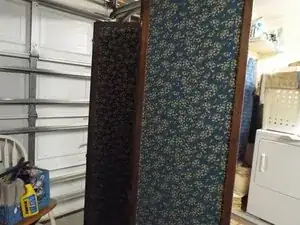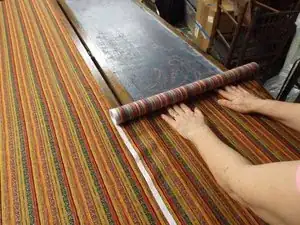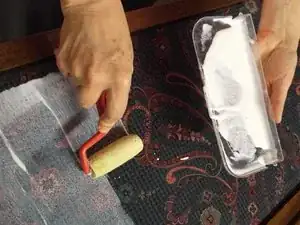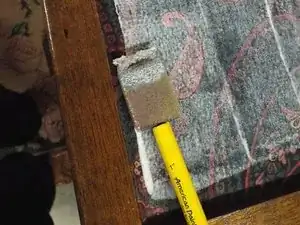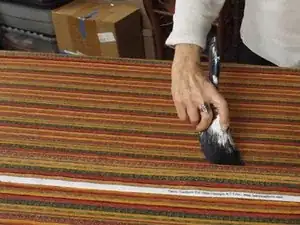Introduction
Folding screens used to be a common item of home furniture, used to informally separate parts of a room for privacy or simply for decor. These screens can now be found and purchased for very little at thrift stores, antique shops, and auctions, but often need a little updating. It's fairly common for the fabric to be worn, out of date, or just not to the buyer's personal taste. It is relatively easy to replace the fabric--in most cases, actually re-cover the existing fabric--to create a personalized craft project for your home.
Tools
-
-
Using the fabric scissors, cut the fabric to approximately the size of the panel plus a few inches all around for fitting and trimming.
-
-
-
Pour a liberal amount of Mod Podge (available at craft and hobby stores, Target, etc.) onto a disposable container, like a plastic lid. Use the sponge roller to begin rolling the Mod Podge onto the old fabric surface.
-
Make sure that you roll the Mod Podge thinly and evenly, otherwise you will have possible bleed-through on your fabric. Work quickly so you cover the whole panel before the Mod Podge begins to dry.
-
Use the foam brush to spread the Mod Podge to the edges of the old fabric panel and into the corners.
-
-
-
Lay the new fabric onto the panel. Get an assistant to help you position the fabric before you let it contact the Mod Podge.
-
Use the paintbrush to smooth the fabric. Work from one end to the other and from the middle to the sides, smoothing out any wrinkles or bubbles. Work quickly so the Mod Podge does not dry before you are finished smoothing.
-
After the Mod Podge has dried (overnight suggested), get a helper, stand your folding screen up, unfold it, and enjoy!
